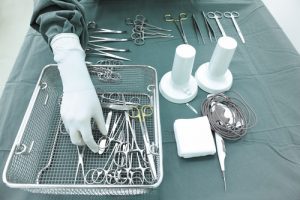
FDA New Medical Device Guidance Medical device guidance is meant to provide the healthcare community and patients with prompt information on changes to medical devices. Consumers will see more rapid notifications regarding medical device risks and potential risks following guidance recently finalized by the U.S. Food and Drug Administration. Under the guidance, the agency will be […]

FDA New Medical Device Guidance Medical device guidance is meant to provide the healthcare community and patients with prompt information on changes to medical devices. Consumers will see more rapid notifications regarding medical device risks and potential risks following guidance recently finalized by the U.S. Food and Drug Administration.
Under the guidance, the agency will be issuing swifter notifications to the public concerning medical device “emerging signals,” which also includes data that supports “a new causal association or a new aspect of a known association between a device and an adverse event,” or new data found by the agency to potentially affect patient management decisions, according to the Regulatory Affairs Professionals Society (RAPS).
“The decision to provide public information about an emerging signal is intended to give health care providers, patients, and consumers access to the most current information about a device that may help inform their patient management decision making. It does not mean that FDA has definitively concluded that there is a causal relationship between the medical device and the emerging signal; nor does a public notification about the emerging signal mean that FDA is advising health care providers, patients, or consumers to limit their use of the device,” the guidance indicates.
The personal injury attorneys at Parker Waichman LLP are keeping up-to-date with medical devices issues. The firm continues to offer free legal consultations to individuals with questions about filing a defective medical device lawsuit.
 Guidance finalization followed industry pressure to calm new FDA notices of device events or other issues that may become “incorrect, incomplete, or misleading,” according to RAPS. Industry group, AdvaMed, apparently “took issue” with the agency’s inability to “articulate a reasonable basis to communicate emerging signals to the public,” RAPS reported.
Guidance finalization followed industry pressure to calm new FDA notices of device events or other issues that may become “incorrect, incomplete, or misleading,” according to RAPS. Industry group, AdvaMed, apparently “took issue” with the agency’s inability to “articulate a reasonable basis to communicate emerging signals to the public,” RAPS reported.
The guidance indicates that the FDA’s Center for Devices and Radiological Health (CDRH) will not publicly release information unless the following criteria are met:
The guidance notes that FDA’s communications should be clear about what it does and does not know and if -and, if so, why-it recommends specific actions. RAPS notes that public notifications on emerging signal for medical devices will include a description of the applicable device(s); details about the emerging signal, including the objective evidence on which the decision to issue the notification is based; and information on the known benefits and risks of the device and the device’s use.
The guidance also indicates that, as well as interacting with an impacted company/companies during the signal management process, the FDA will advise these firms prior to issuing a public notification, “unless time does not permit because of the risk of patient harm or it is not feasible, e.g., CDRH is not able to reach all manufacturers,” according to the agency, RAPS reported. Public updates are expected to be posted on the FDA website no less than twice yearly, according to the guidance; more often, as needed and appropriate until the signal evaluation is complete and the public is notified of the FDA’s findings.
The federal regulator explains that, when a medical device is approved or cleared, that device has a risk-benefit profile that healthcare providers, patients, and consumers use to determine treatment decisions. When a medical device is released to the market, any new information, such as unexpected issues, may affect the risk-benefit profile; therefore, prompt release of new information may help all impacted communities to make informed treatment choices based on the most recent information.
The guidance indicates that the FDA considers a variety of factors when evaluating and communicating medical device emerging signals. The final guidance includes the following non-exclusive list:
The guidance advises FDA staff to strongly consider public communication concerning an emerging signal when the information supports a new causal association, or a new aspect of a known association, such as an increased rate or seriousness of event or reduced benefit between a medical device and at least one adverse event or clinical outcome; available evidence is of sufficient strength; and information could have significant clinical consequences for patient management decisions and/or could significantly alter the device’s known risk-benefit profile.
While the guidance states that “nformation that is unconfirmed, unreliable, or lacks sufficient strength of evidence is not an emerging signal,” device makers may be justifiably concerned about what the FDA will consider “sufficient” strength of evidence to communicate new details concerning a device. Data needed to obtain approval or clearance for a device may be significant.
The guidance instructs agency staff to conduct an initial assessment of the need to communicate about an emerging signal within 30 days of receipt of information. Should FDA staff decide against communicating about an emerging signal, the draft guidance recommends the staff re-evaluate the decision within 30 days of receiving additional new information.
The personal injury attorneys at Parker Waichman LLP offer free, no-obligation case evaluations. For more information, fill out our online contact form or call 1-800-YOURLAWYER (1-800-968-7529).


